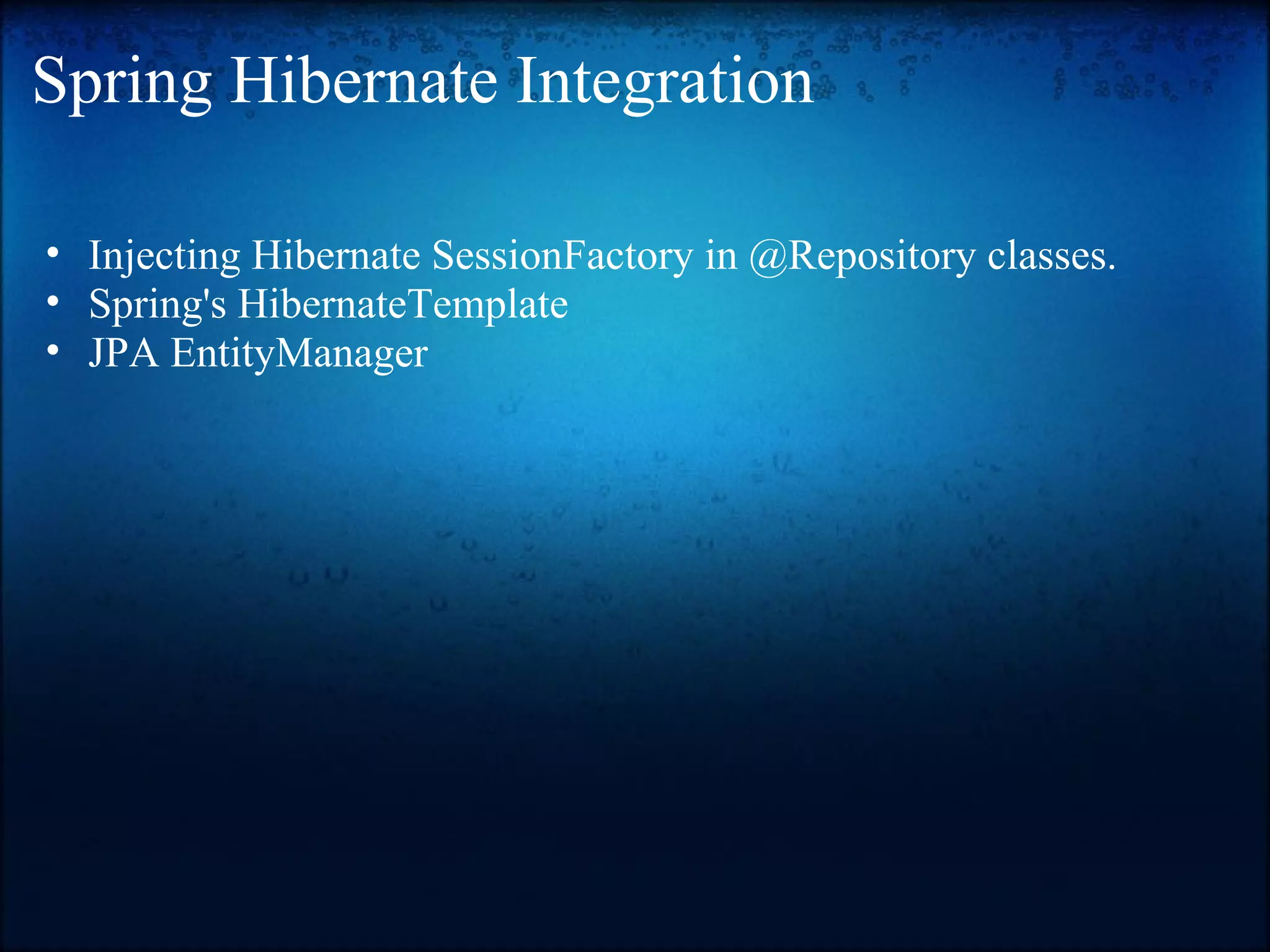This document provides an overview of Hibernate training topics including: - Introduction to object relational mapping and Hibernate query language - Association mappings like one-to-one, many-to-one, one-to-many and many-to-many relationships - Inheritance mappings using table per class hierarchy, table per subclass, and table per concrete class strategies - Integrating Hibernate with Spring frameworks

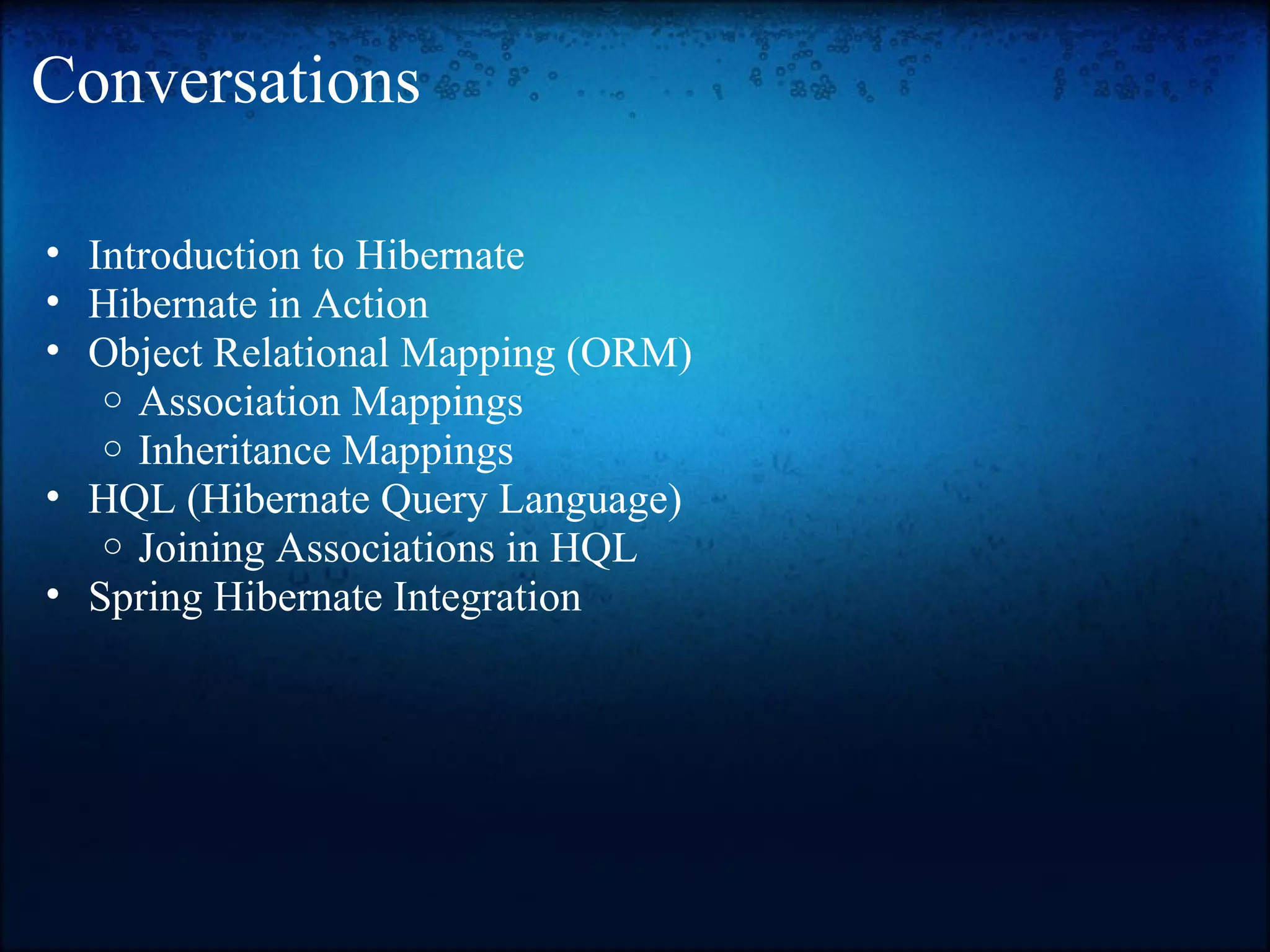

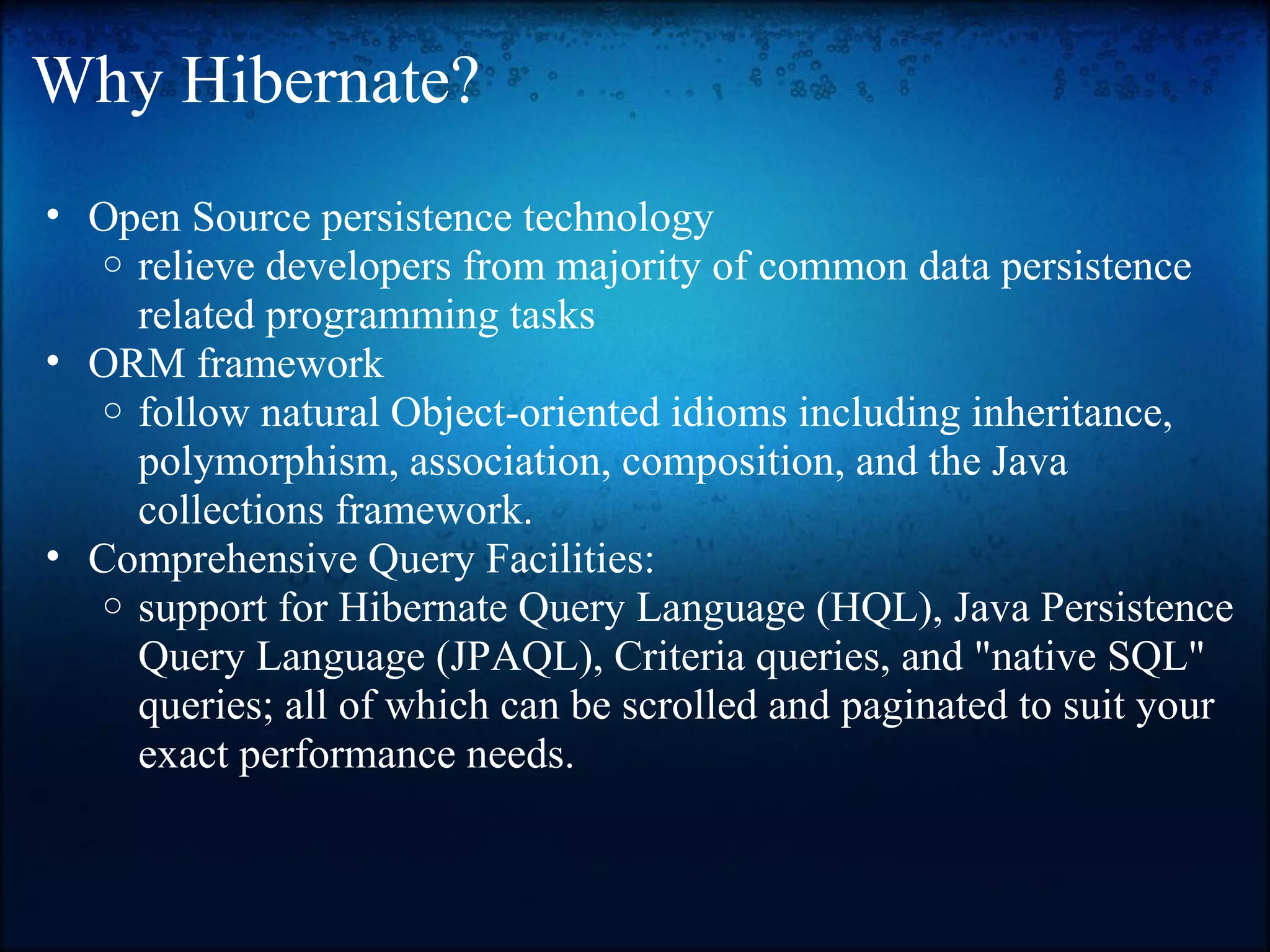
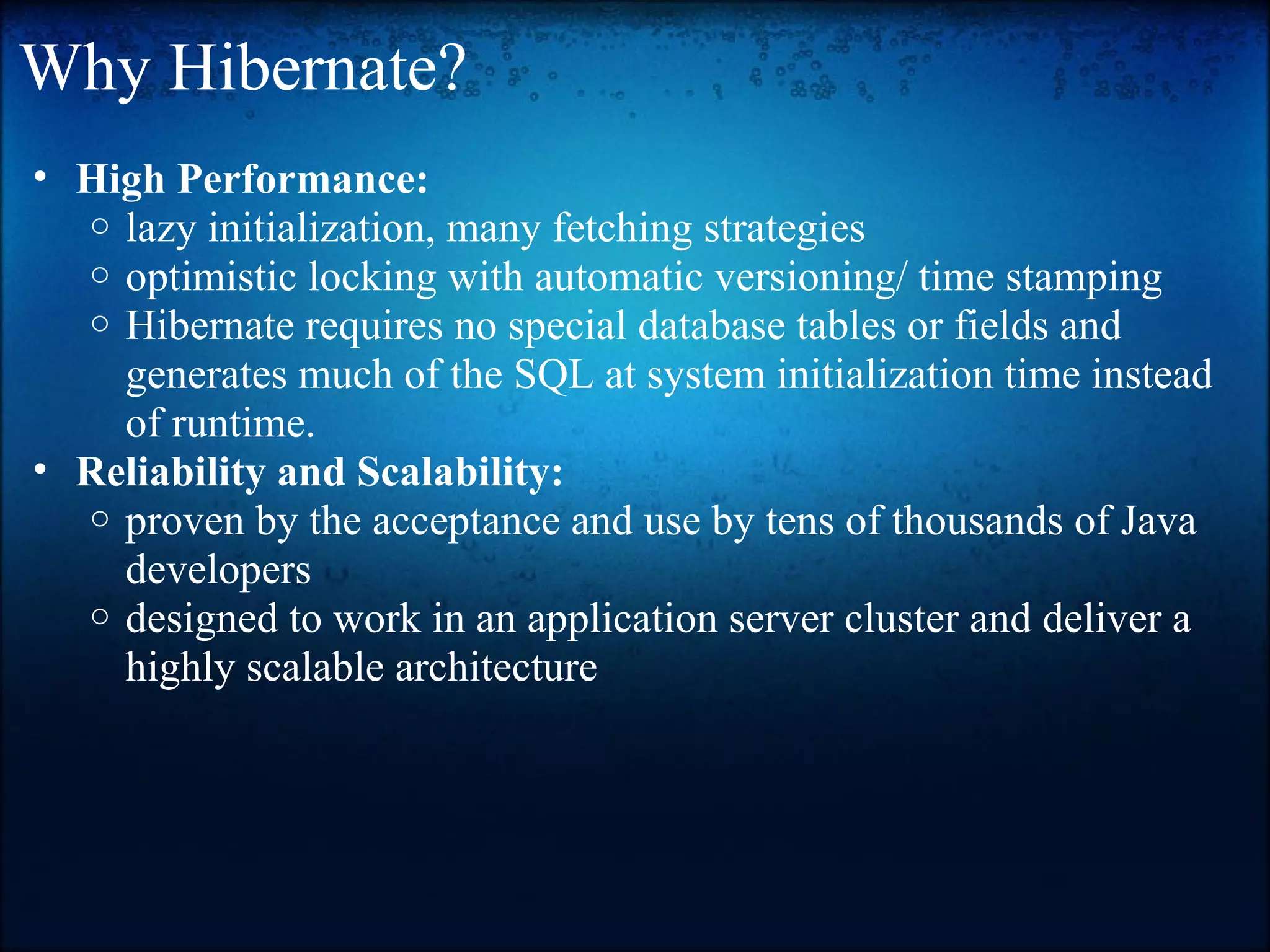


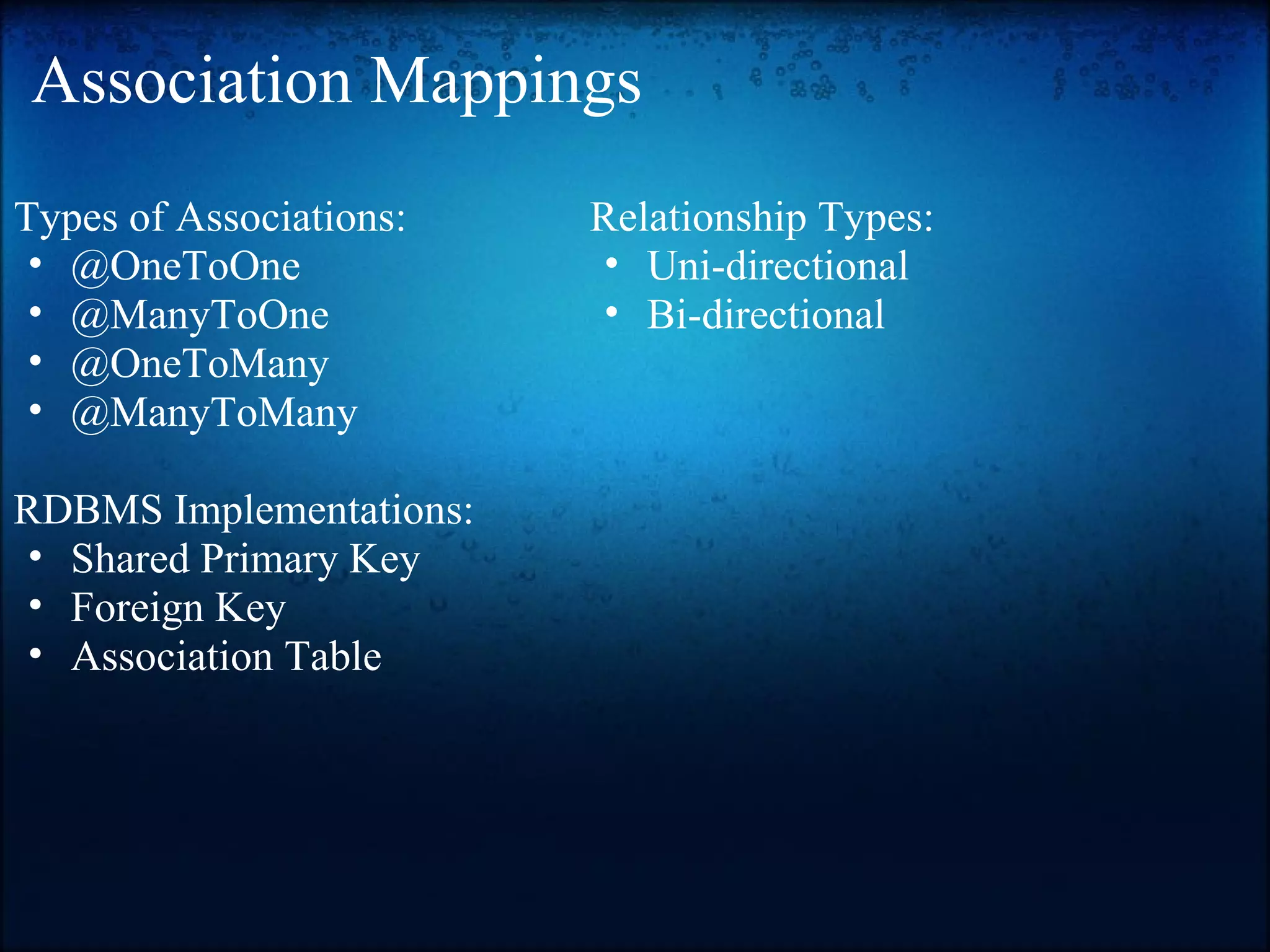
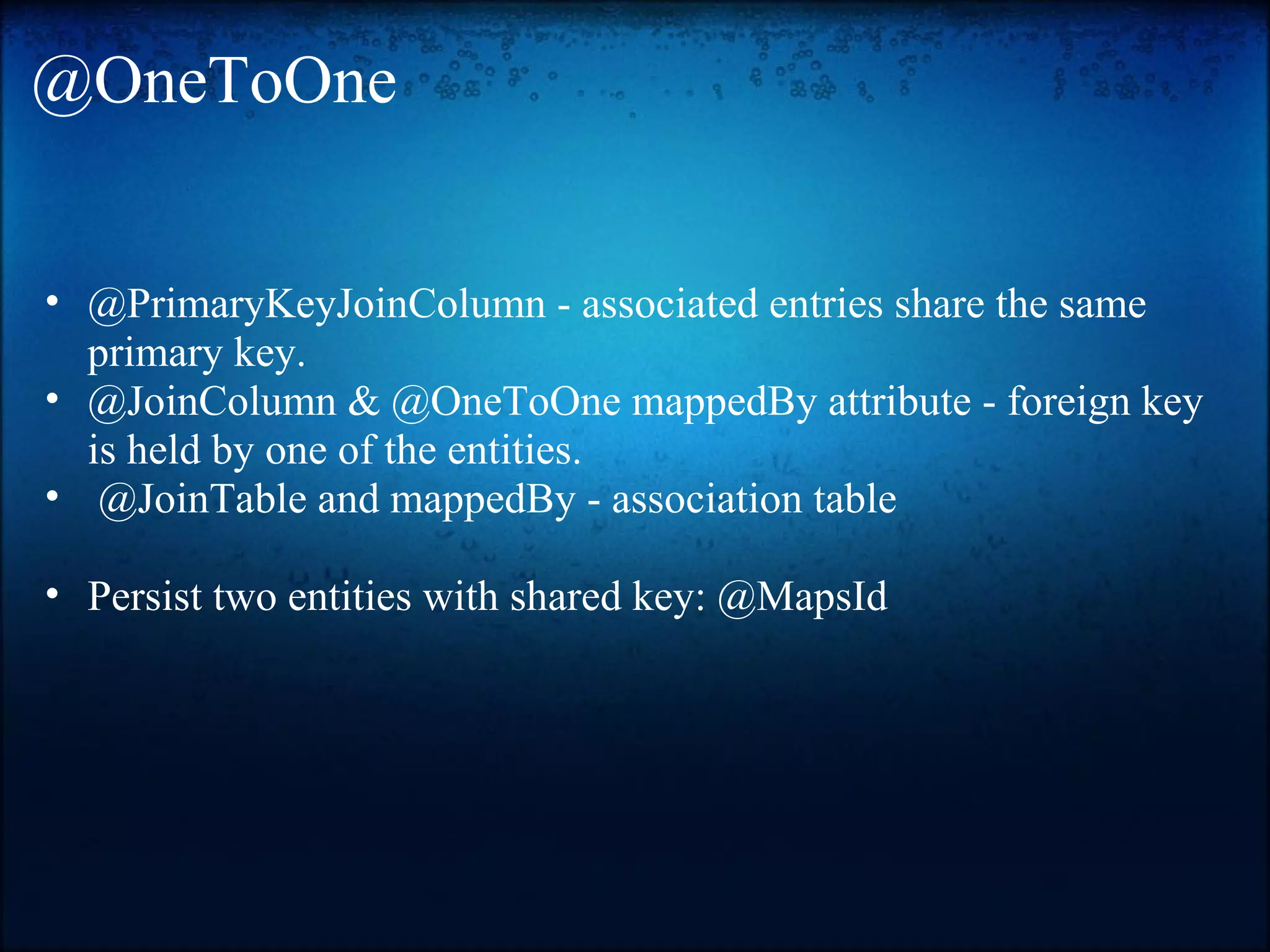

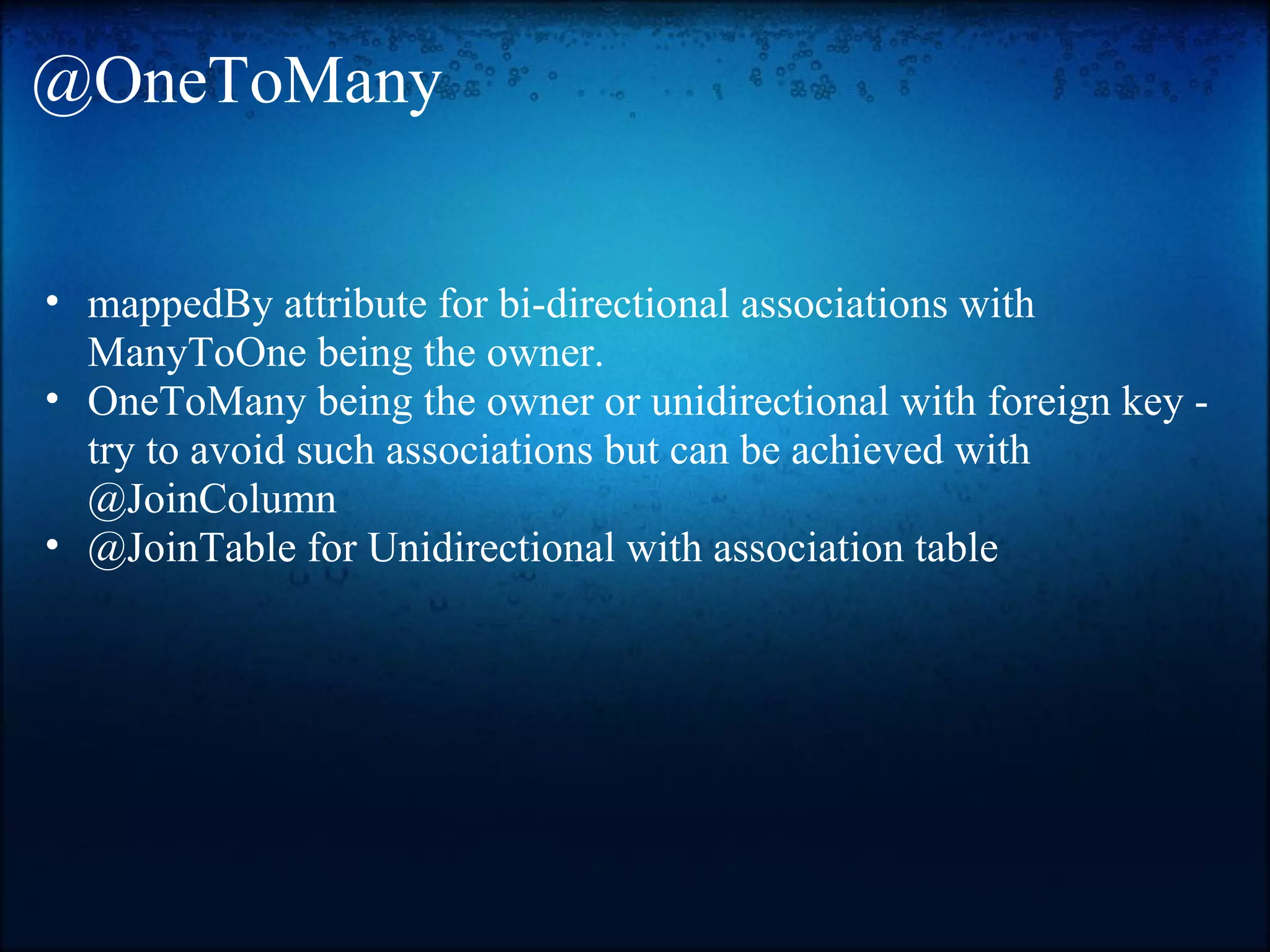

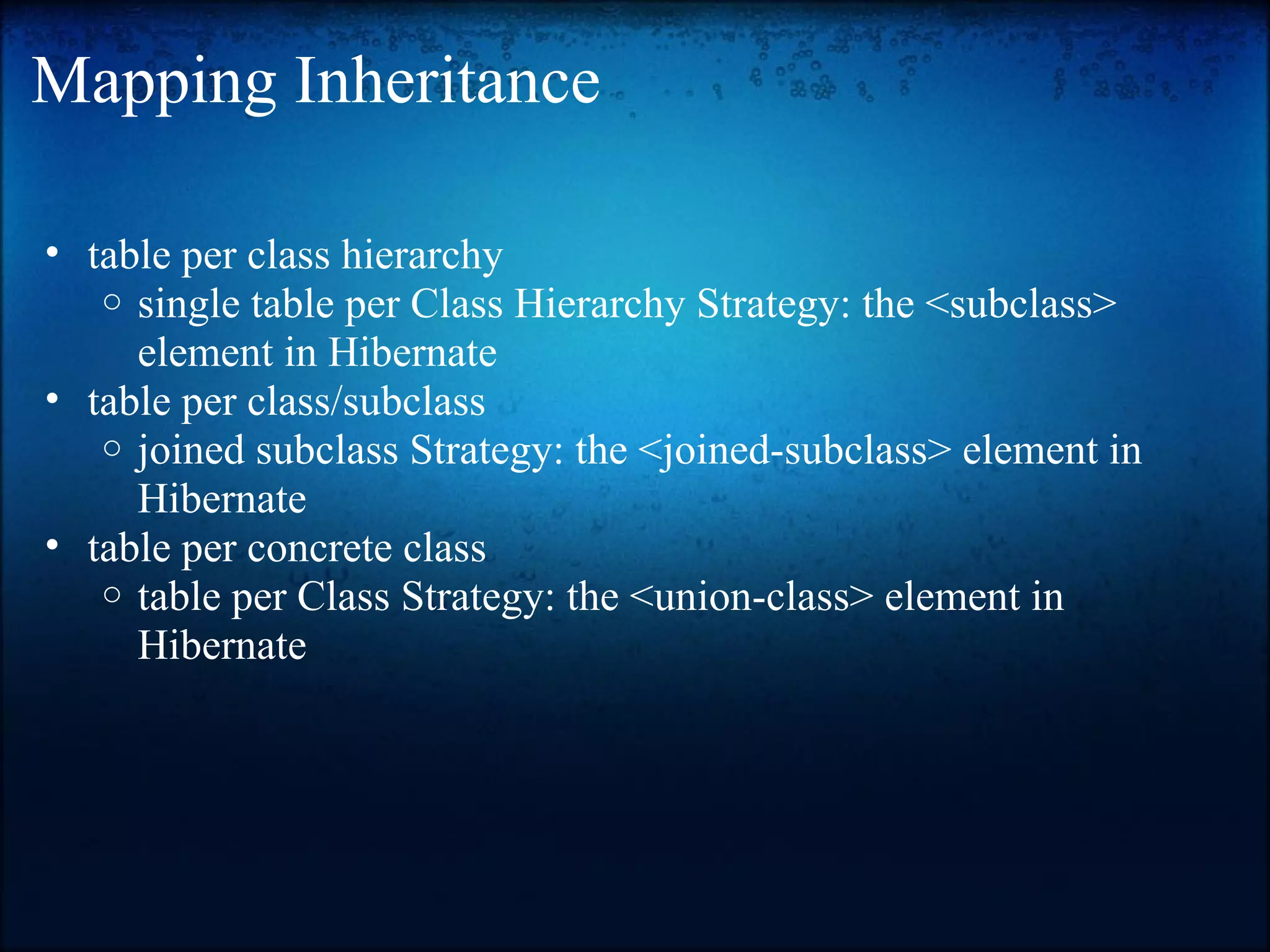
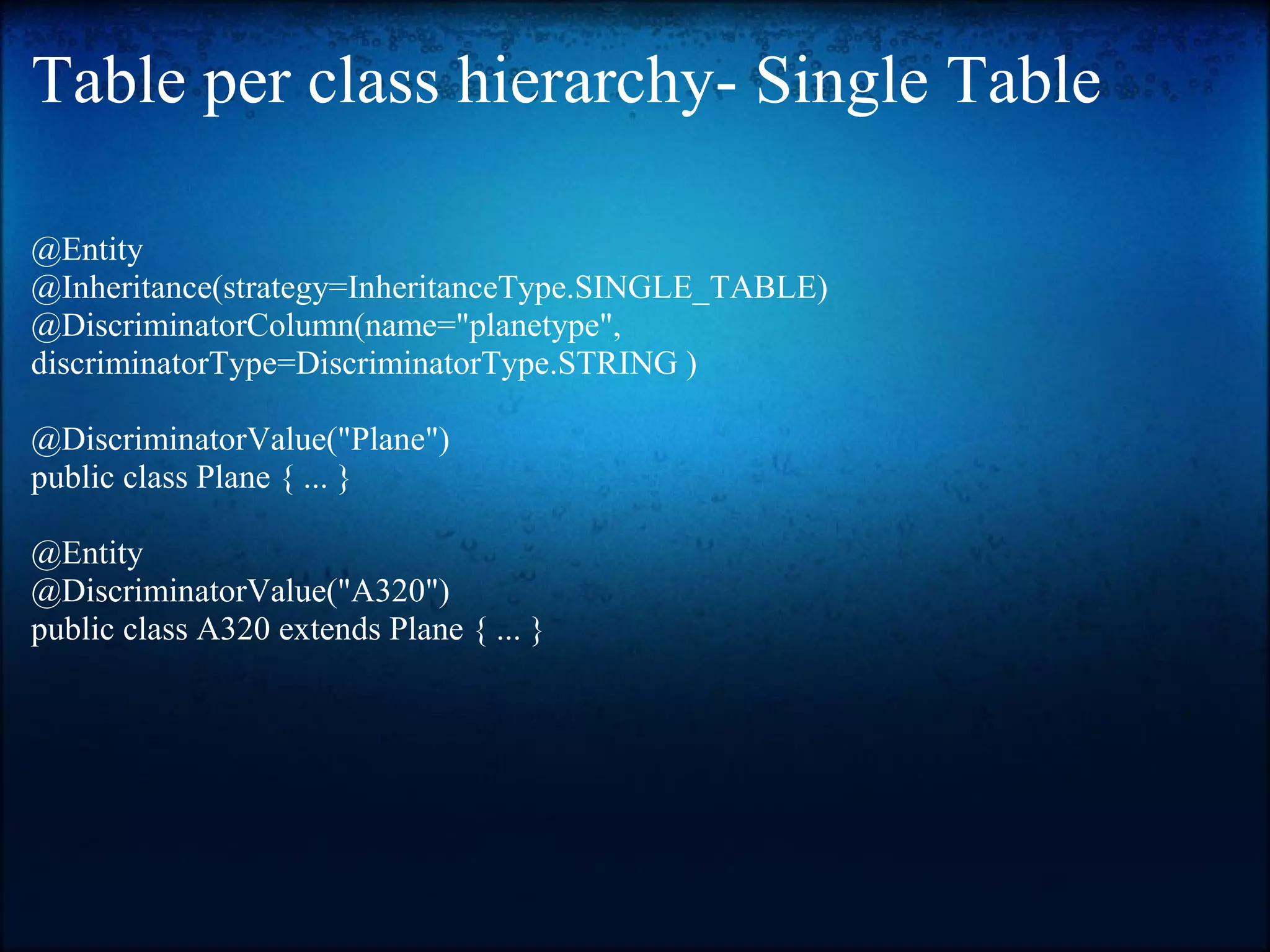
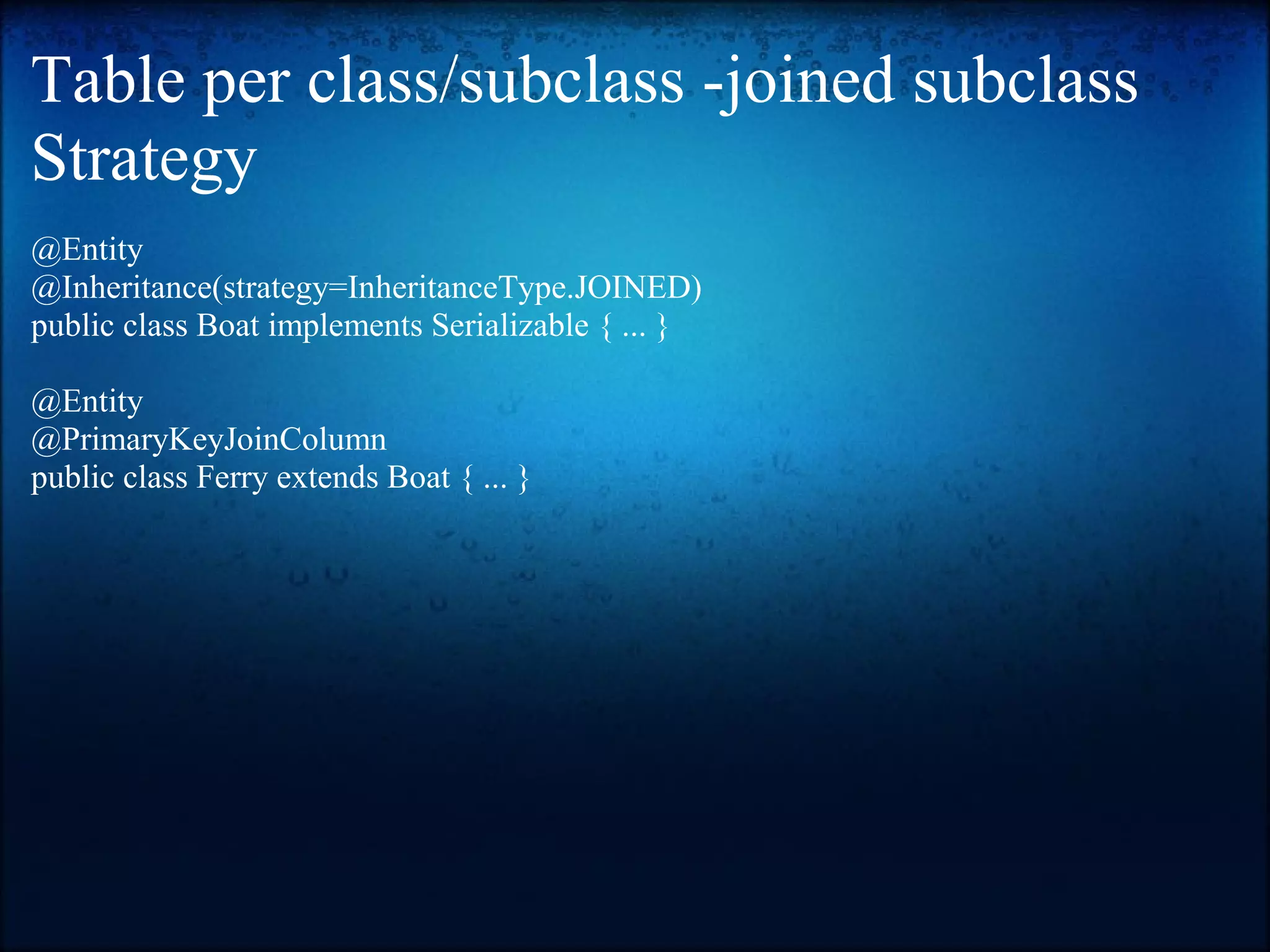
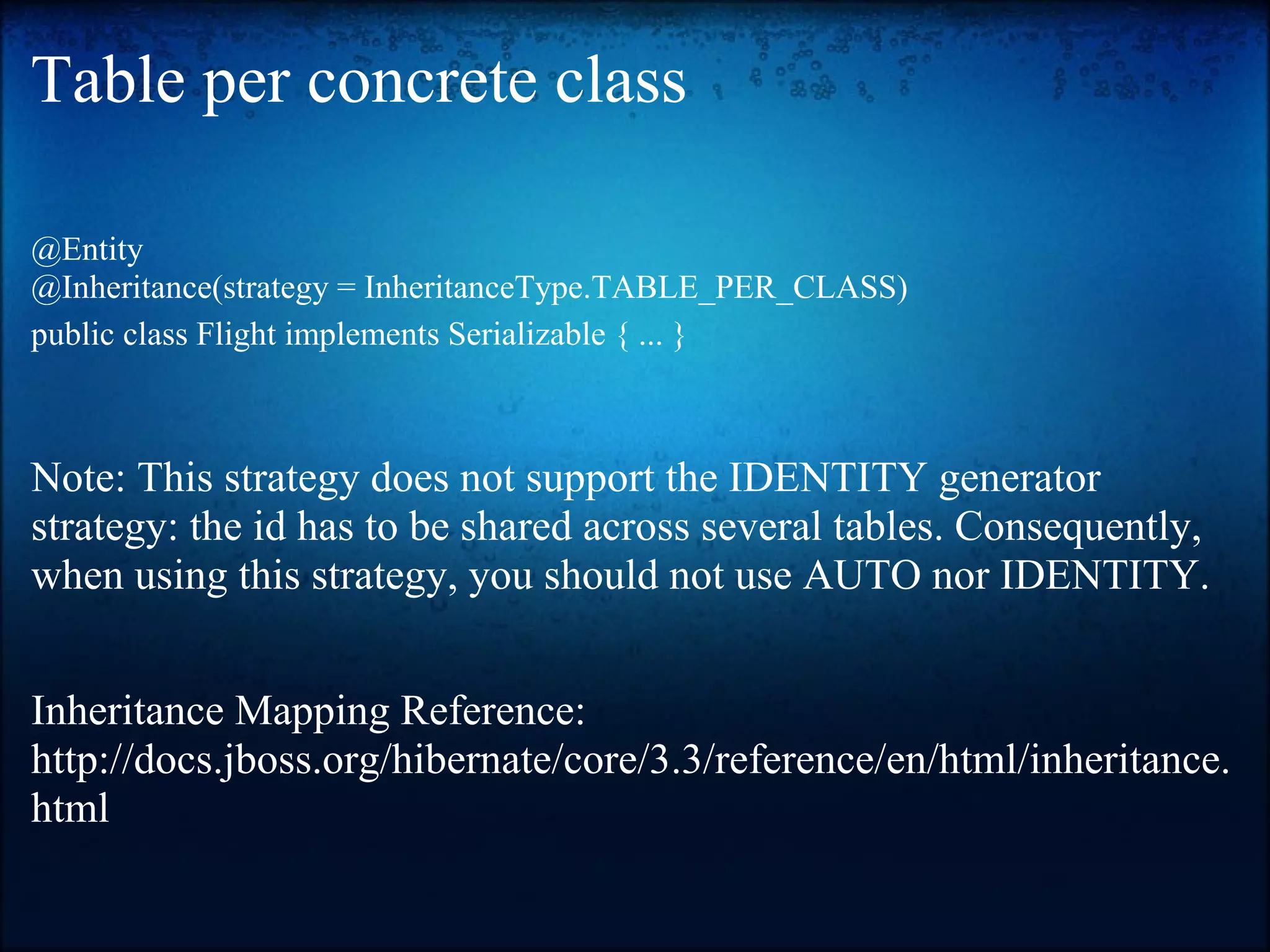
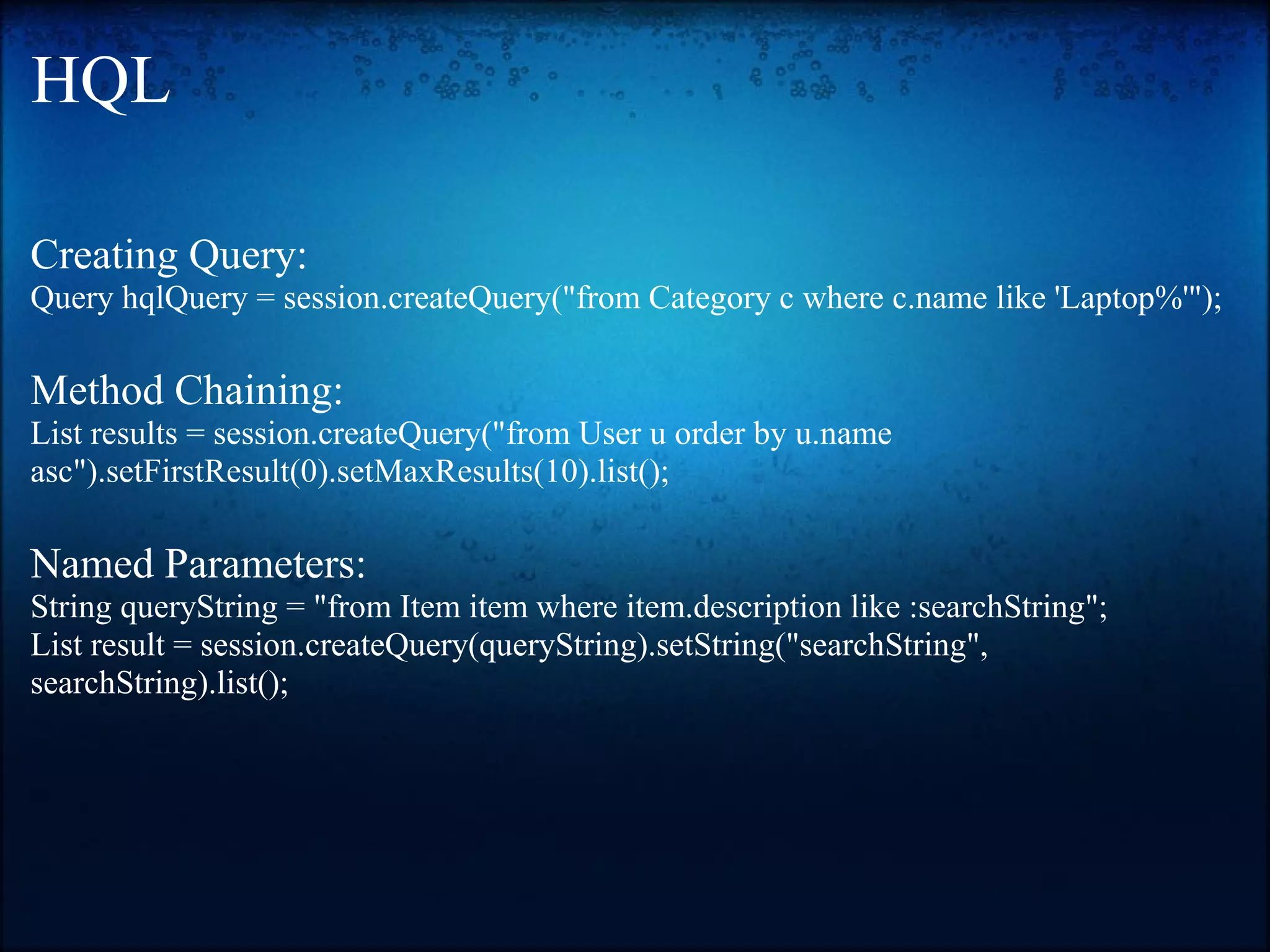
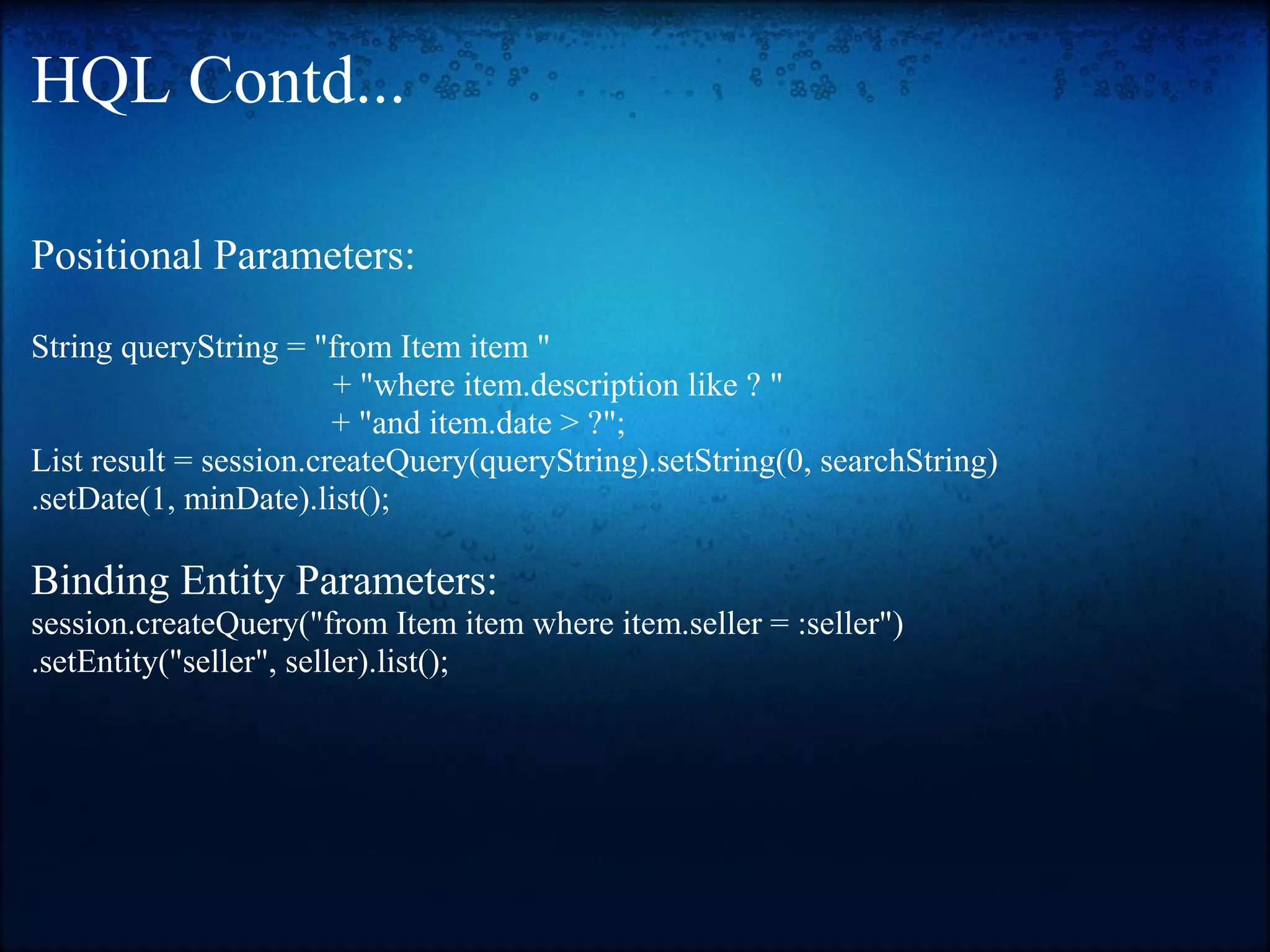

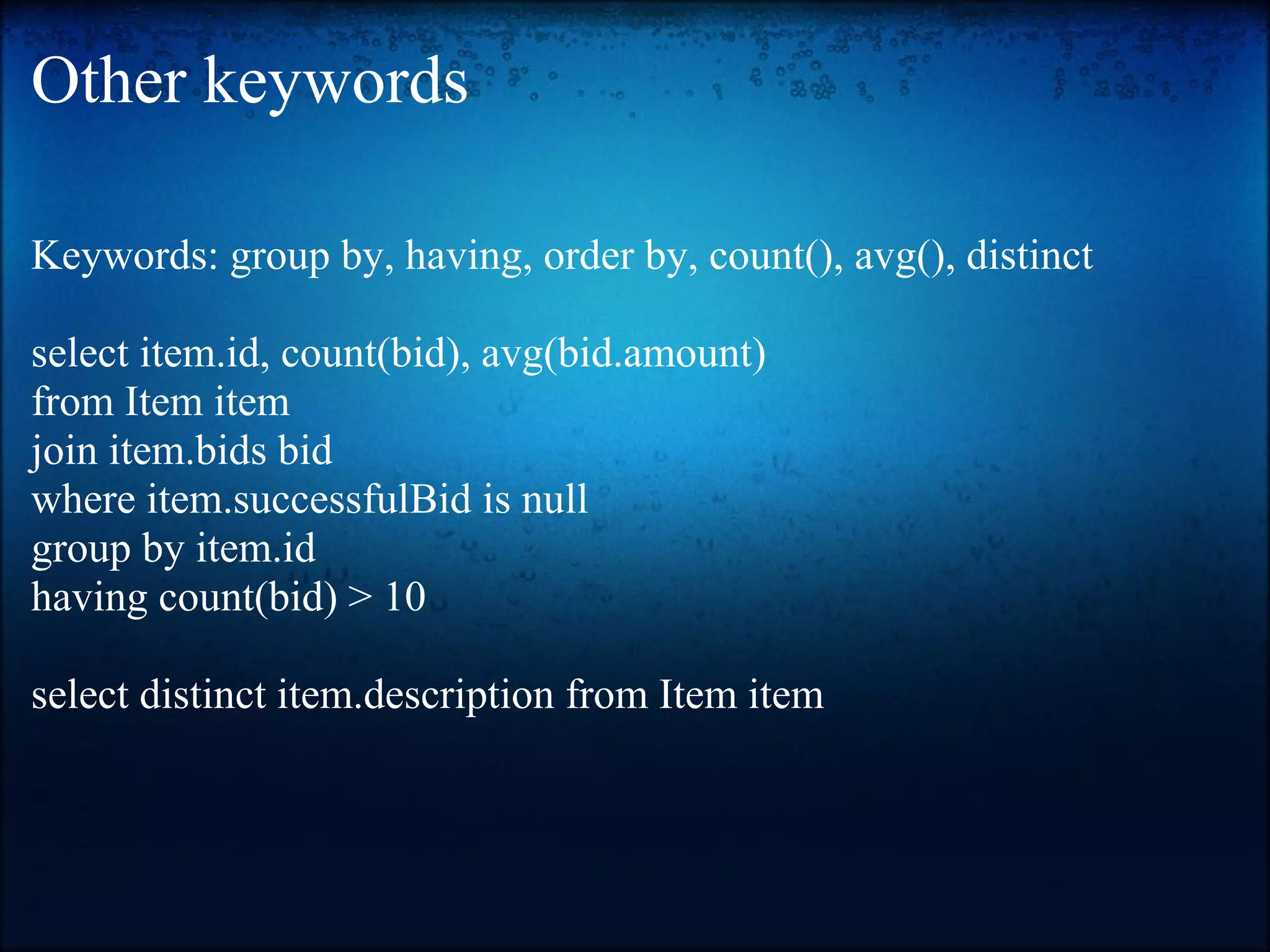
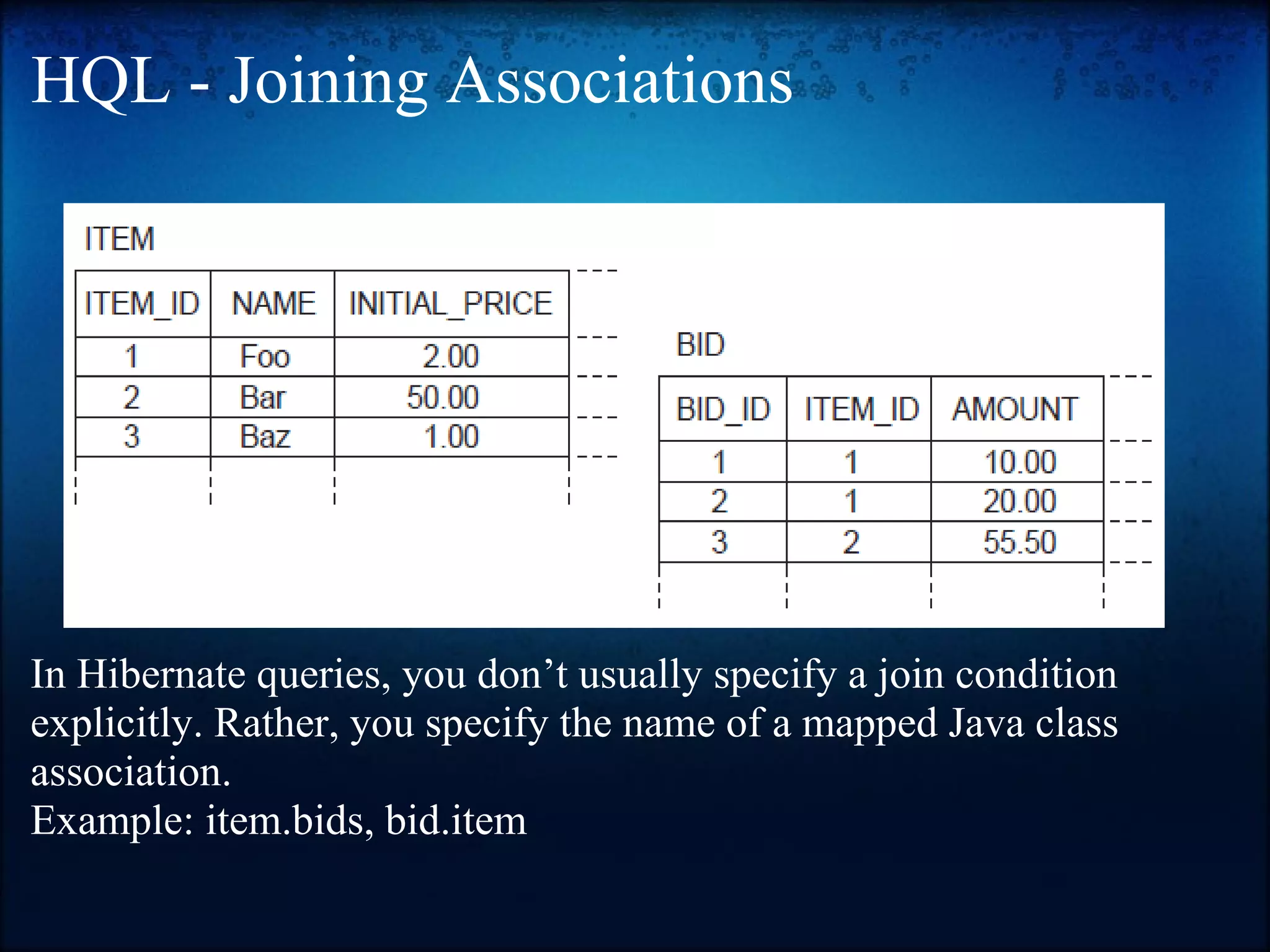

![Ordinary Join in the from clause from Item item join item.bids bid where item.description like '%gc%' and bid.amount > 100 Query q = session.createQuery("from Item item join item.bids bid"); Iterator pairs = q.list().iterator(); while ( pairs.hasNext() ) { Object[] pair = (Object[]) pairs.next(); Item item = (Item) pair[0]; Bid bid = (Bid) pair[1]; }](https://image.slidesharecdn.com/hibernate-170905050522/75/Hibernate-Tutorial-for-beginners-23-2048.jpg)
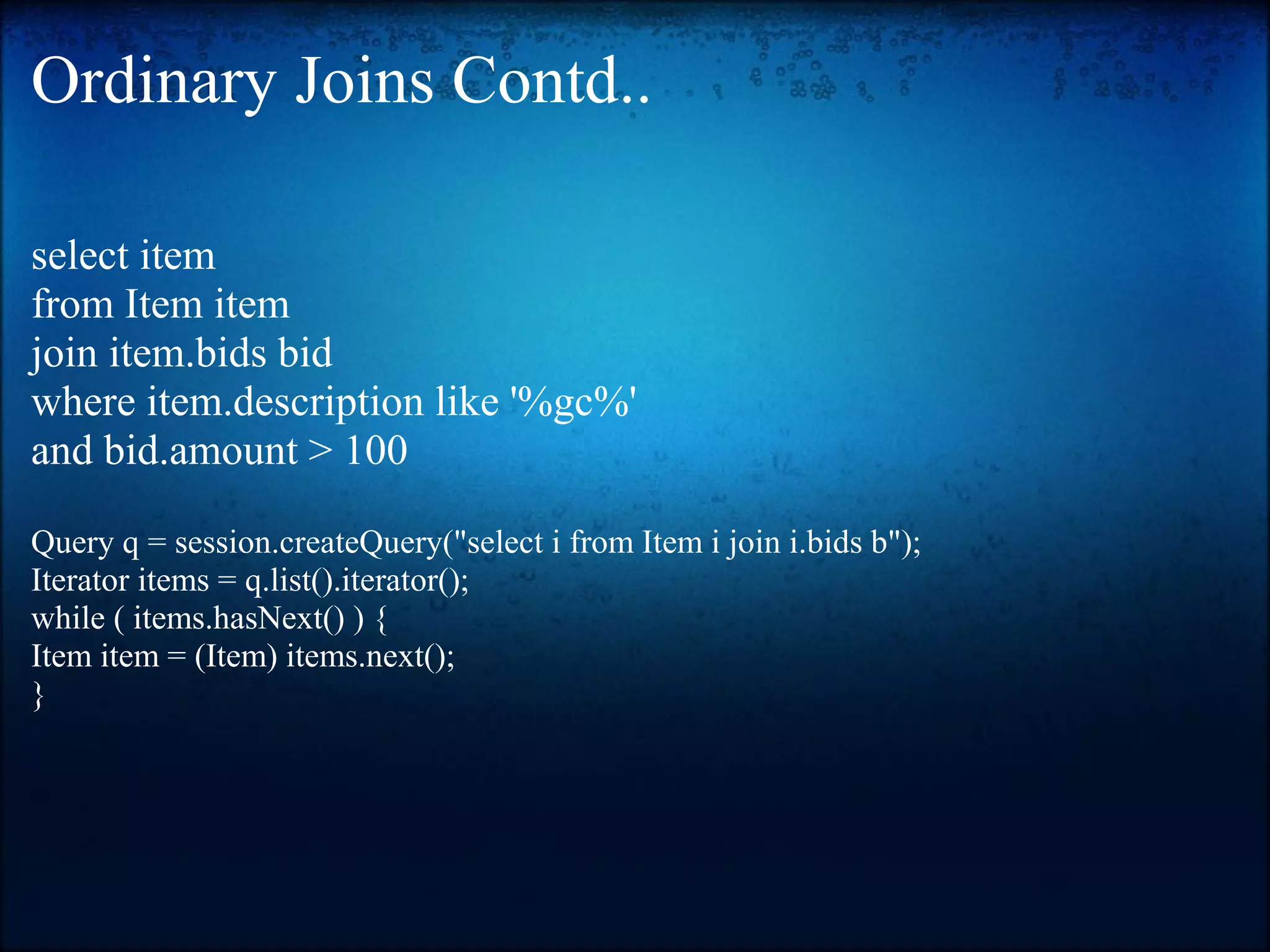
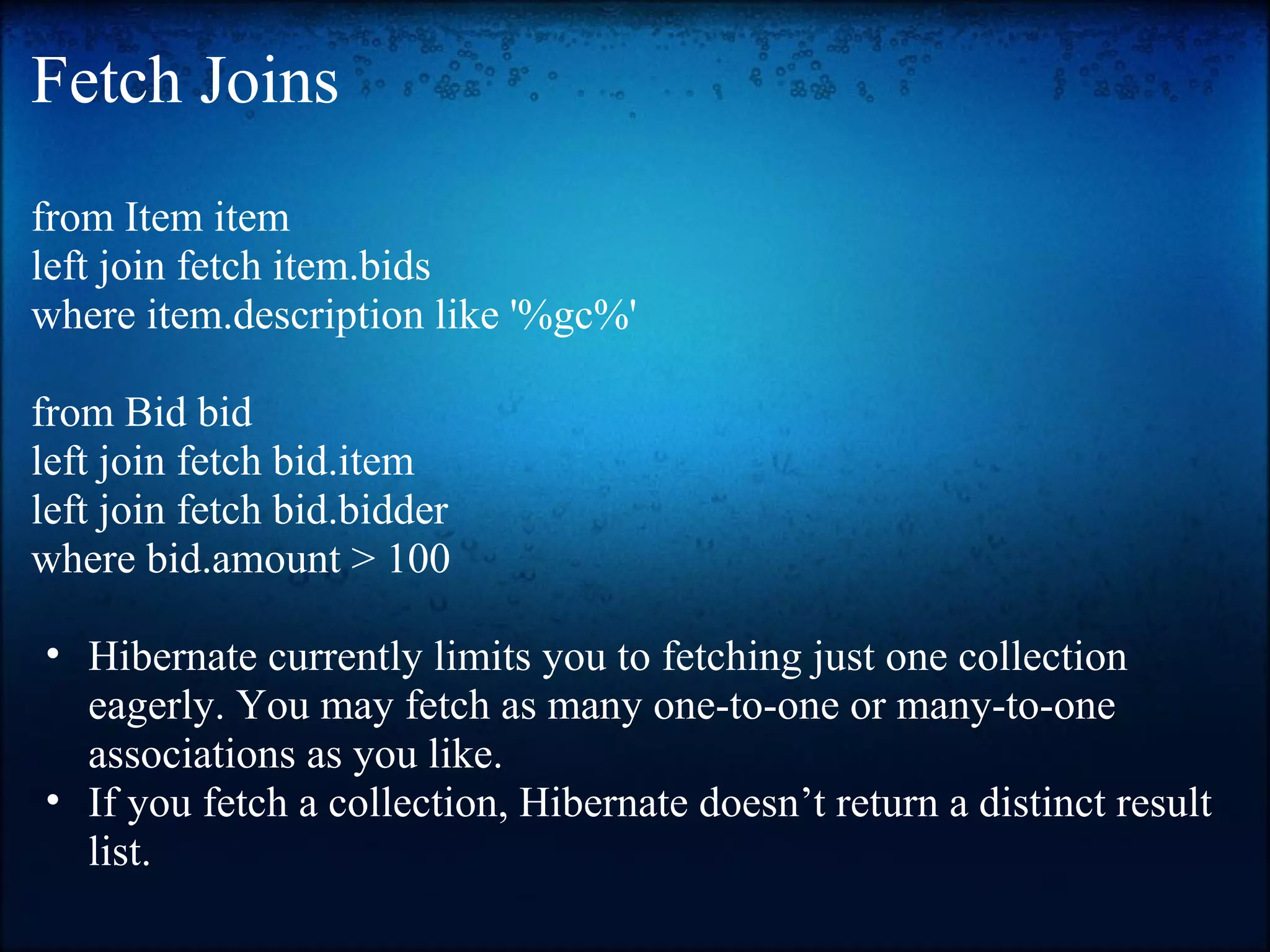

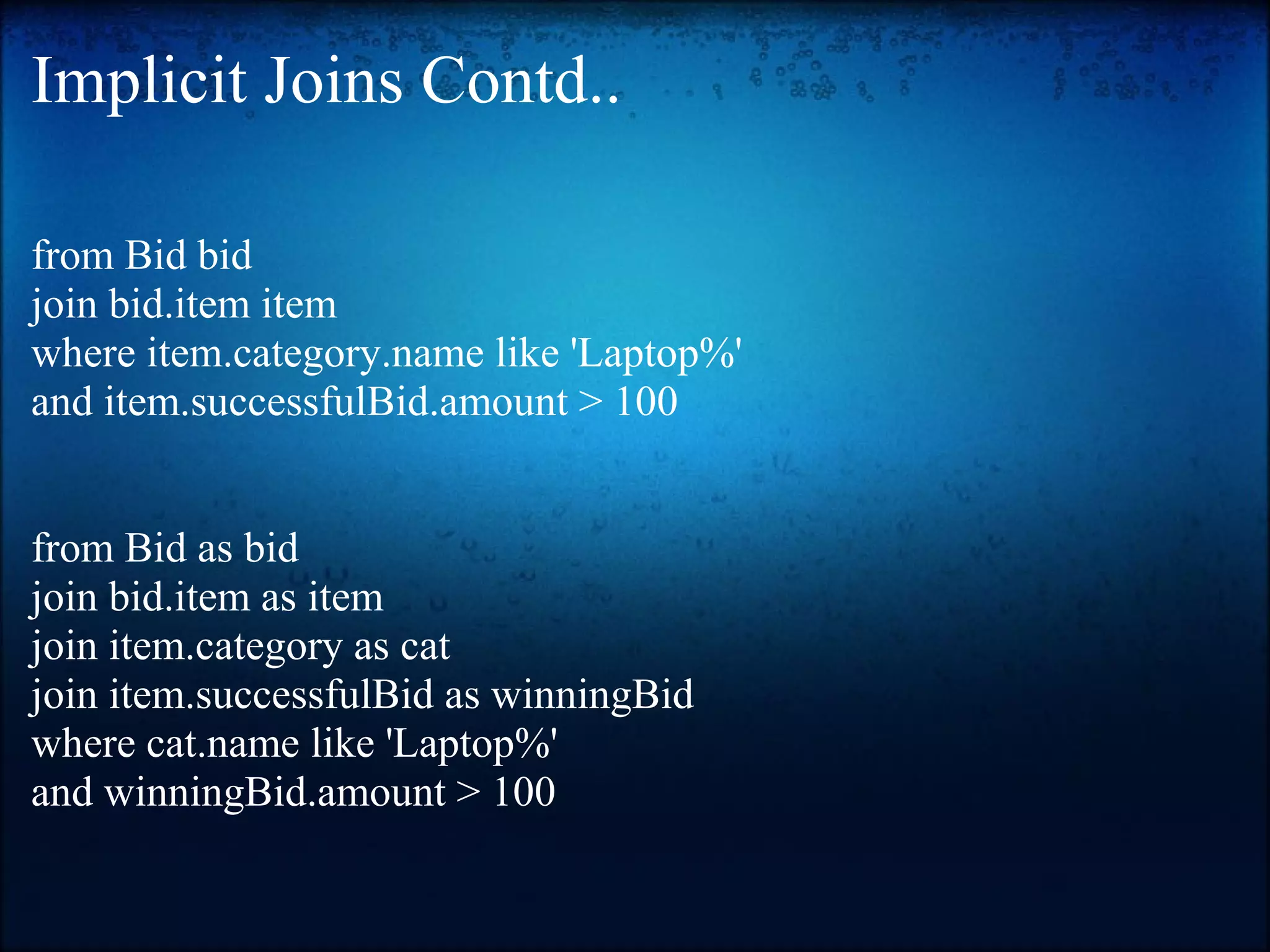
![Theta Style Joins When the association is not defined. from User user, LogRecord log where user.username = log.username Iterator i = session.createQuery( "from User user, LogRecord log " + "where user.username = log.username" ) .list().iterator(); while ( i.hasNext() ) { Object[] pair = (Object[]) i.next(); User user = (User) pair[0]; LogRecord log = (LogRecord) pair[1]; }](https://image.slidesharecdn.com/hibernate-170905050522/75/Hibernate-Tutorial-for-beginners-28-2048.jpg)
